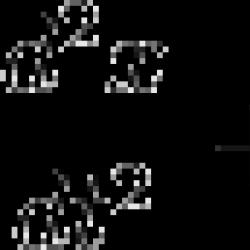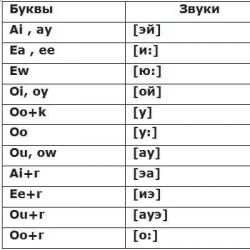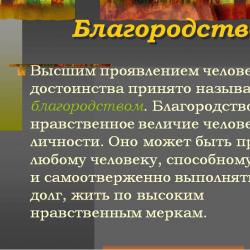Puzzle of 4 matches to make a square. Match puzzles. Puzzle “glass with cherry”
What kind of riddles with matches we didn’t invent at school! Or maybe they didn’t invent it themselves, but just wished on their friends what they found out themselves? Is it really that important, after all? 🙂
Another thing is important: riddles with matches have indeed always been one of our favorite hobbies. Nowadays matches have become largely an anachroism. And in our time they could be easily stolen from any kitchen. 🙂 So we had fun.
Today, when I am already an adult, I nevertheless remember all these activities with great pleasure. And with the same pleasure I publish riddles with matches for you.
Riddles with matches with answers1. How can you fold a triangle using one match without breaking it:
Answer . The condition does not say: “only one match,” which means you can use some improvised means, for example, the corner of a table. By attaching a match to it, we get a triangle.
2. How to fold a quadrilateral using two matches?
Answer . Place two matches parallel to the sides of the corner of the table.
3. Rearrange one match in a given fraction to get one.
Answer . This fraction is equal to 1/7. Place the match on the far right on top of the Roman five on the right. Let's get the denominator to be the square root of unity, which is equal to one. We get: 1/1=1.
4. You can make a square out of four matches. Therefore, to fold five squares, twenty matches are required. You can fold five squares using sixteen matches. And you try to put together five squares from nine matches. (Note: matches may not be completely included in the square.)
Answer.

5. The picture shows a fortress and a stone wall around it. Between the fortress and the wall there is a moat filled with water, with hungry crocodiles in it. Show how, with the help of two matches, you can build a bridge between the fortress and the wall.

Answer .

6. In the picture, a sad pig is made using 15.5 matches.

Make it fun by rearranging 3.5 matches.
Make the pig curious by removing one match and moving 2.5 matches.
Answer 1. Cheerful pig.

Answer 2. Curious pig.

7. In an incorrect equation made using matches, move only one match to get the correct equation.
False equality.

Answer. True equality.

9. Move three matches in this figure so that the fish swims in the opposite direction.

Answer.

10. A cow with a head, body, four limbs, horns and a tail is made of matches. You need to move 2 matches so that the cow looks not to the left, but to the right.

Answer

11. Arrange a) three matches in this figure; b) two matches in such a way that you get two rectangles.

Answer


12. Incorrect equations are made from matches using Roman numerals. Move just one match to get the correct equalities.
a) XI - V = IV;
Answer.
a) X - VI = IV or XI - V = VI or XI - VI = V - only three solutions.
b) IX - V = IV or X - VI = IV - two solutions.
13. Riddles are jokes.a) The son argued with his father that if you add eight to five, you can get one. And he won the argument. How did he do it?
Answer . With the help of five and eight matches he laid out the word "one".

b) In this cross made of matches, rearrange only one match to make a square.

Answer.
Why is four not a square? After all, it is equal to the square of two. 🙂

14). Eighteen matches make six equal squares.

If you remove two matches, you can get four such squares. How can I do that?
Answer

15). A glass is made from four matches. There is a cherry inside the glass. You need to move two matches so that the berry is outside.

Answer

16). A house is made of matches. It is necessary to arrange two matches in it in such a way as to obtain its mirror image.

Answer

17). Arrange 3 matches in this grid in such a way that three squares are formed.

Answer

18 We have a snake made of matches. Rearrange five matches so that you get two squares of different sizes.

Answer. The problem has two solutions.
Solution 1.

Solution 2.

19 Rearrange two matches so that you get five identical squares.
Answer

20 In the given four squares, move four matches so that three squares are formed.

Answer

21 This spiral is made of matches.

Task 1. Move two matches in a spiral to make two squares.
Task 2. Move four matches in spirals to make three squares.
Answer to problem 1.

Answer to problem 2.

22 Place three matches on the table.

Place two more matches on top of them to make eight.
Answer . From two matches we add the Roman numeral V, we get: VIII - eight.
23 They made a figure out of matches that looked like a children's toy tumbler.

You need to rearrange three matches so that this tumbler turns into a cube.
Answer

24 Rearrange only one match on the left side of the incorrect equation to obtain a true equality.

Answer

25 A beetle is made of matches and crawls to the right. Move three matches in such a way that the beetle crawls to the left.

Answer

26 This incorrect inequality was created using 25 matches.
It is necessary to rearrange two matches so that the correct equality is obtained.

Answer We add the two matches that make up the right unit to the two and get an eight. The resulting correct equality will take the form: 16 – 8 = 8.
27 It is necessary to rearrange one match so that an incorrect equation turns into a correct one.

Answer 9+3 – 4=8
28 In this incorrect equation, you need to move one match to get the correct equality.

Answer We apply the right match of the left side from above to the right side of the Roman five, we get the square root sign. On the left we get the square root of unity, which is equal to one. We have the correct equality: 1 = 1.
29 Correct this incorrect equation without touching a single match. Make this equation true. (Matches must not be lit, moved, moved, etc.)

Answer
It is enough to turn the drawing 180 degrees. We get the correct equality.

With picks - inexhaustible material for composing puzzles that promote the development of imagination, logical thinking and bring real pleasure to all participants in the game, young and old. Similar logic games appeared in ancient China about three thousand years ago. The role of matches was then played by small bamboo sticks. Then interest in puzzles made from sticks or matches either faded away or reappeared. In the 19th and 20th centuries, several collections of puzzles made from matches and toothpicks by different authors were published in different countries, which contributed to a surge of interest in this activity.
In addition to logic and imagination, a passion for puzzles made from matches will help develop perseverance and attentiveness in a child. Children's interest in matches as a means of composing and solving logic puzzles will allow them to forget about their direct purpose.
11 match puzzles with solutionsThe problems proposed below are of different levels of complexity and may have other solutions. Try making your own problems the same way.
Task #1:
a) How to take out 8 matches and get 4 equal squares (has 2 possible solutions).


b) How to take out 6 matches and get 3 equal squares. 
c) How to take out 6 matches and get 2 squares and 2 identical hexagons. 
d) How to take out 4 matches and get 1 large square and four identical small ones. 
Task #2:

a) Move 4 matches to another place and get 3 equal squares. 
b) Move 3 matches and also get 3 equal squares. 
Task #3:

Move 3 matches and get 7 equal squares. 
Task #4:

a) Move 2 matches and get 7 equal squares. 
b) From the resulting figure, remove 2 matches and get 5 equal squares. 
Task #5:

Move 6 matches and get two squares of different sizes. 
Task #6:

Move 6 matches and get 6 equal rectangles. 
Task #7:

Take out 5 matches and get 5 triangles (2 solutions).


Task #8:

Move 4 matches and get 3 squares. 
Task #9:

Move 5 matches to balance the scales. 
Task #10:

Move 6 matches and get 6 symmetrical identical quadrangles. 
Task #11:

Add two matches to three and you get eight. 
In this section of the site you are presented with many interesting puzzles, tasks, riddles, rebuses, games, logic problems with matches. They all have answers. To pre-hide all answers, click the “Hide Answers” button. Subsequently, to get the answer, you need to click on the word “Answer” located below the task.
Solving puzzles, tasks, riddles with matches develops logic, thinking, visual memory, and imaginative thinking.
1) Move one match so that the equality becomes true.
3) Move one match so that the equality becomes true.
4) Move one match so that the equality becomes true. There are two possible answers.
5) Move one match so that the equality becomes true.
6) Remove two matches so that only three squares remain.
7) How to make this equation with Roman numerals correct, while not touching a single match (you can’t touch anything, you can’t blow either).
8) Move one match to make a square.
9) Move 4 matches to make 3 squares.
10) Try placing six matches on a flat surface so that each match touches the other five matches.
11) Move one match so that the equality becomes true. In this equation, four and three sticks in a row are equal to four and three, respectively.
12) How can you place only three matches on a flat surface, so that by placing a glass on them, the bottom of the glass will be from the flat surface at a distance of 2,3,4 matches (i.e. the matches should be between the bottom of the glass and the surface of the table )?
Answer
Three matches are laid out on the table in the form of a triangle, as can be seen in the figure below. The larger the triangle, the closer the bottom of the glass will be to the table and vice versa.
13) Move two matches to make four squares.
14) Think, is it possible to lift as many as 15 matches with one match? How can I do that?
15) Move 4 matches to make 15 squares.
16) How to make seven triangles using nine matches; the ends of the matches can be fastened with plasticine, i.e. you will get a three-dimensional model.
We've all at one time or another tried to solve problems involving moving matches. Remember these? Simple, clear and quite interesting. We invite you to remember how this is done and solve these 10 exciting tasks. There will be no examples or mathematics here, you can try to think about them with your children. Each riddle comes with an answer. Here we go? 😉
1. Unfold the fishExercise. Rearrange the three matches so that the fish swims in the opposite direction. In other words, you need to rotate the fish 180 degrees horizontally.
Answer. To solve the problem, you need to move the matches that make up the lower part of the tail and body, as well as the lower fin of the fish. Let's move 2 matches up and one to the right, as shown in the diagram. Now the fish swims not to the right, but to the left.
 2. Pick up the key
2. Pick up the key Exercise. In this problem, 10 matches are used to form a key. Move 4 matches to make three squares.

Answer. The problem is solved quite simply. The four matches that form that part of the key handle must be moved onto the key shaft so that 3 squares are laid out in a row.
 3. Glass with cherry
3. Glass with cherry Exercise. With the help of four matches, the shape of a glass is formed, inside of which lies a cherry. You need to move two matches so that the cherry is outside the glass. It is allowed to change the position of the glass in space, but its shape must remain unchanged.

Answer. The solution to this fairly well-known logic problem with 4 matches is based on the fact that we change the position of the glass by turning it over. The leftmost match goes down to the right, and the horizontal one moves to the right by half its length.
 4. Seven squares
4. Seven squares Exercise. Arrange 2 matches to form 7 squares.

Answer. To solve this rather complex problem, you need to think outside the box. Take any 2 matches that form the corner of the largest outer square and place them crosswise on top of each other in one of the small squares. So we get 3 squares 1 by 1 match and 4 squares with sides the length of half a match.
 5. Hexagonal star
5. Hexagonal star Exercise. You see a star consisting of 2 large triangles and 6 small ones. By moving 2 matches, make sure that there are 6 triangles left in the star.

Answer. Move the matches according to this pattern, and there will be 6 triangles.
 6. Happy calf
6. Happy calf Exercise. Move just two matches so that the calf faces the other way. At the same time, he should remain cheerful, that is, his tail should remain pointing up.

Answer. To look in the other direction, the calf simply needs to turn its head.
 7. House made of glasses
7. House made of glasses Exercise. Arrange six matches so that two glasses make a house.

Answer. The two outer matches of each glass will make a roof and a wall, and the two matches at the base of the glasses just need to be moved.
 8. Libra
8. Libra Exercise. The scales are made up of nine matches and are not in a state of equilibrium. You need to move five matches into them so that the scales are in balance.

Answer. Lower the right side of the scale until it is level with the left. The match-base of the right side should remain motionless.
 9. Arrow
9. Arrow Exercise. Move 3 matches so that the arrow changes its direction to the opposite.

Answer. To solve this problem you will need to move the three bottom matches of the arrow up.
 10. House
10. House Exercise. Move one match so that instead of 9 triangles, only one remains.

Answer. It is necessary to turn the lower diagonal match, the second diagonal match turns along with it, because lies on top.







